Conventional Panels
- Entry levels fire panels with radial wiring for zones & sounders circuits.
- All sounders & beacons fitted to separate sounder circuits.
Know what you're looking for?
Filter Products
Manufacturer
Advanced(1)
C-Tec(2)
Eaton(3)
Gent(2)
Haes(3)
Kentec(2)
Morley-IAS(1)
Zeta Alarms(1)
Ziton(1)
Type
Resolution
A Rating
Alarm In/Out
Anti-Fog
Audio In/Out
Auto Aligning
B Rating
Battery
Bluetooth Controller
Built-in Mic
Built-in Speaker
C Rating
Channels
Class A Holes
Class B Holes
Class C Holes
CO Testing
Codec
Colour
Detection Type
Device Type
Direction
Environment
IR Range
Extinguisher Type
F Rating
Face Detection
Fast Fix Base
First Aid
Hazardous Applications
Head Removal
Heat Testing
Interconnectable
Lens
Lines
Low Level Controller
Marine Applications
Material
Max HDD Capacity
Max Loops
Maximum Record Resolution
Minimum Distance
Monitor Outputs
Networkable
Optical Zoom
Photoluminescent
Pipework Diameter
PoE Ports
Power
Protocol
Range
Reach
Relay
Remote Control Test
Self-Test
Series
Short Circuit Isolator
Sign Type
Size
Smoke Testing
Stimulus Type
System Type
Technology
Touchscreen
Wireless Interlink
Showing all 16 results
-
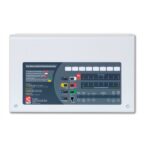
C-Tec CFP 2, 4 or 8 Zone Conventional Fire Panel
C-Tec- LPCB certified to EN54 Parts 2 and 4.
- 2, 4 or 8 zone circuits.
- Economy version available.
- Four conventional sounder circuits.
-
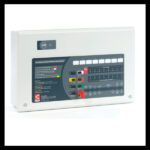
C-Tec CFP 8 Zone Conventional Repeater Panel
C-Tec- Repeats functions of mater CFP panel (Standard Conventional or AlarmSense).
- Up to 8 repeaters per CFP master.
- Includes its own Mains power supply that requires its own standby battery supply.
-

Eaton Conventional Fire Alarm 16 Zone Control Panel
Eaton- 16 zone convention fire alarm panel.
- Supplied complete with battery for 24 hour standby.
- Zonal relay card as standard.
-

Esento Conventional Remote Display Unit
Haes- Repeater for Esento conventional panels.
- 4 x 40 character LCD display.
- Full system control.
- Fire & fault outputs.
- Remote key switch input.
-

Esento Evoque – 16-32 Conventional Zones
HaesKey Features
- 16- 32 zones
- Activate controls via keyswitch or code entry
- Soft tactile buttons for controls & programming
- Compatible with most detectors
- Integral detector removal monitoring
- 5 Amp switch mode power supply Nom 27V DC
- 4 monitored sounder outputs
- 2 Aux C/O relays (1 x Fire) (1 x Fault). voltage free
- Class change, Alert, Silence Alarms & Reset switched -ve inputs
- Fire, Fault, Disablement & Reset, programmable switched -ve outputs
- Program delays to ouputs
- False alarm management modes A, B & C
- Test mode, with or without sounders
- Disable zones, sounder O/Ps, aux O/Ps & delays
- Fire alarm routing output programmable option
- All sounder circuits are fused @ 500mA with resettable fuses
-

Excel-EN 2-12 Zone Conventional or Twin-Wire Panel
Haes- 2-12 zones
- 3 modes to manage false alarms
- Individually selectable Twin Wire zones
- Network up to 8 control panels
-
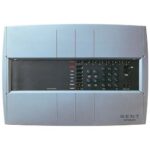
Gent Xenex 13271-08LB 8 Zone Repeater Panel
Gent- 8 zone repeatre panel compatible with Xenex conventional panel.
- Repeat alarm information in second location.
- Maximum of only one, 8 zone repeat panel per system.
-
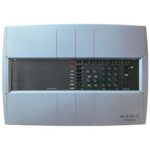
Gent Xenex 2, 4 or 8 Zone Conventional Panel
Gent- 2, 4 or 8 zone conventional panel from Gent.
- Up to 8 conventional sounder circuits.
- One-man test and commissioning features.
-

Infinity 1-8 Zone Fire Alarm Panel
Zeta Alarms- Optional 24V aux supply (4-8 zone versions only)
- Optional non-latching zone
- Fault relay can be configured as 2nd fire relay
-

JSB FX2200 2 or 4 Zone Conventional Panel
Eaton- 2 or 4 zones panels
- Flexible, high specification system
- Simple “one-shot” auto-reset user test facility
-

JSB FX2200 Conventional Fire Repeater Panel
Eaton- Flexible, High Specification System
- Simple Auto-Reset User Test Facility
- Class Change and Programmable Fire/Fault Relay
- Third Party Approved
-
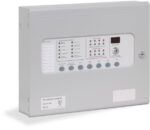
Kentec Sigma CP Conventional 2, 4 or 8 Zone Panel
Kentec- Fully certified to BS EN54-2 and BS EN54-4
- 2, 4 or 8 version zones
- Surface and Flush Mounting Options
- Installer friendly
-
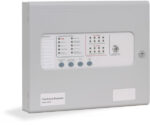
Kentec Sigma CP-R Conventional 2-8 Zone Repeater Panel
Kentec- Two-Wire Serial Connection
- Up to 7 Panels Per System
- Full Control Over Main Panel
- 1.2mm Mild Steel Construction
-

Morley Horizon 2, 4 or 8 Zone Conventional Panel
Morley-IAS- Simple, user friendly design.
- Simple to install.
- Intuitive to use.
- 2, 4 or 8 Zones.
- Walk test.
- Enhanced feature set.
- Multilingual text inserts.
- Designed to comply with EN54 part 2 and part 4.
-
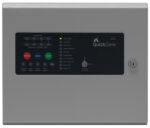
QuickZone 2 or 4 Zone Conventional or Sav-Wire Panel
Advanced- 2 or 4 zones.
- DIL selectable conventional or twin-wire (savwire) set up.
- Class change and alert inputs.
- Fire and fault relays.
- 2 monitored sounder circuits.
- 1 Amp switch mode PSU.
- Space for up to 3.2Ah batteries.
- False Alarm management.
- Approved to EN54 2 & 4.
- 3 year warranty.
-
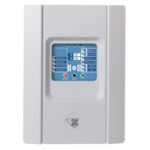
Ziton ZP1 Conventional Fire Control Panel
Ziton- Modern, Elegant Design
- Easy Removable Parts
- Default Reigonal Set Up
- EN54 Compliant






